The History of Maui during the War Years
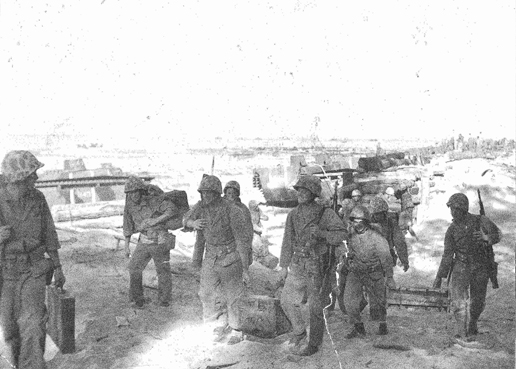
On the Land: Maui as a Training Island
Hawai`i during World War II served as a major training and staging and supply base for the entire region. Due to similarity of environments within the Pacific, the islands were particularly suited for jungle warfare exercises and amphibious operations.
Maui during the war was fully engaged as a staging center and training base. There were almost 50 different military training areas on Maui, including live-grenade courses, pistol and rifle and machine-gun ranges, a bazooka area, a mortar and artillery impact area, a seacoast artillery range, an antiaircraft firing area, and combat firing ranges for maneuvering and firing of tanks and halftracks in coordination with the infantry. Maui also featured extensive jungle training areas and simulated village and cave fighting courses. Training was conducted both day and night and bivouacked encampments could be seen all over the island.
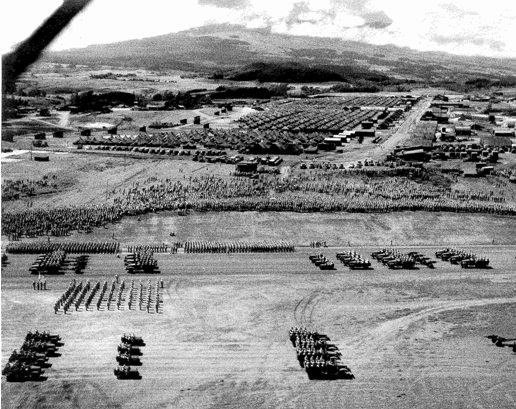
Many units trained on Maui, but the island was home to one in particular, the 4th Marine Division or "Maui Marines." Construction of Camp Maui began near Ha`ikū under the rainbows and the rain on the slopes of Haleakalā in February, 1944. Eventually offices and living quarters, mess halls and the Post Exchange, and even baseball diamonds and boxing rings, were established. The camp would be home for the 18,000 marines of the 4th Division for two years.
In the Sky: Maui's Naval Air Stations
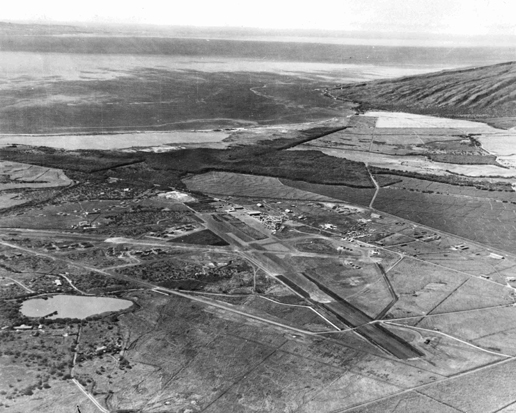
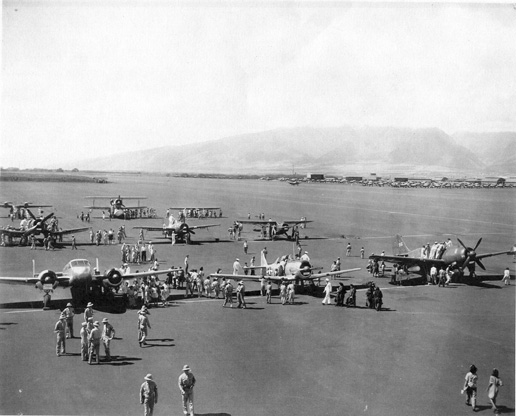
Maui had two naval air stations: NAS Pu`unēnē (originally known as Maui Airport), commissioned in 1942, and NAS Kahului, built in 1943. NAS Pu`unēnē featured training facilities, bomb and ammunition magazines, and capacity for an entire aircraft carrier group. By 1943 Pu`unēnē also offered advanced training and staging for fighter, torpedo-bomber, and dive-bomber pilots. Ultimately, Maui became the largest single training ground for naval air groups in the U.S.
From the Sea: the Maui Amphibious Training Center
The allied island-hopping campaign in the Pacific required that remote and heavily-defended enemy-held bases and airfields be captured and held. The intense combat needed to invade hostile islands necessitated a myriad of specialized amphibious vessels, greater coordination of air and sea and ground forces, and specialized training.
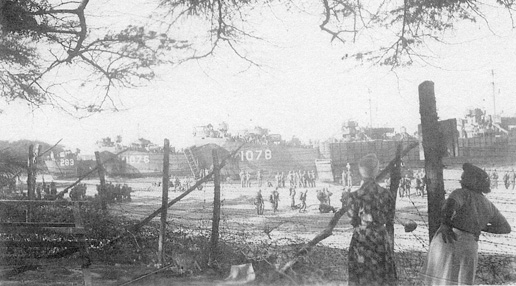
Amphibious training areas sprang up across the Pacific. On Maui, activities centered on the protected waters and leeward beaches along the southern coastline from Mā`alaea (or Buzz's) Harbor to Mākena Landing. Training locations also included Molokini Crater. Kama`ole Park in Kīhei was the wartime location for the Naval Combat Demolition Training and Experimental Base (UDT), and the adjacent Maui Amphibious Training Center, a hub of activity. A long pier extended into the ocean for embarkation exercises. Ships from Pearl Harbor and Kahului converged on Mā`alaea Bay during coordinated training operations prior to major Pacific engagements, such as the invasion of Tarawa (November 1943), Roi-Namur (January 1944), Saipan (June 1944), and Iwo Jima (February 1945). Barbed wire and beach defenses simulated combat landing conditions.

